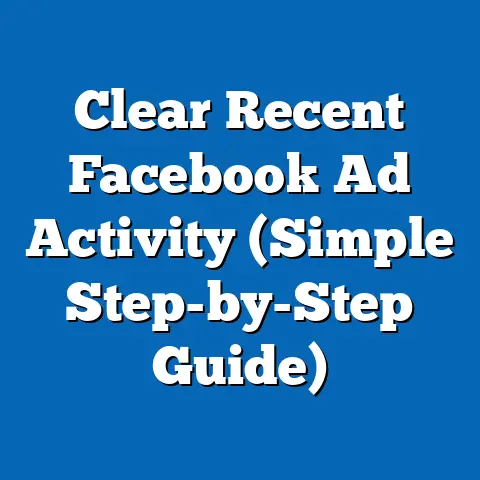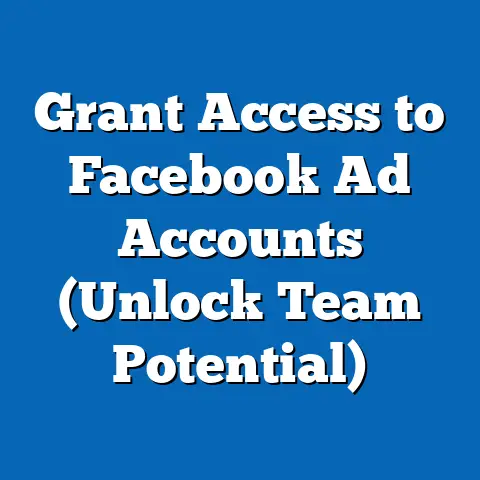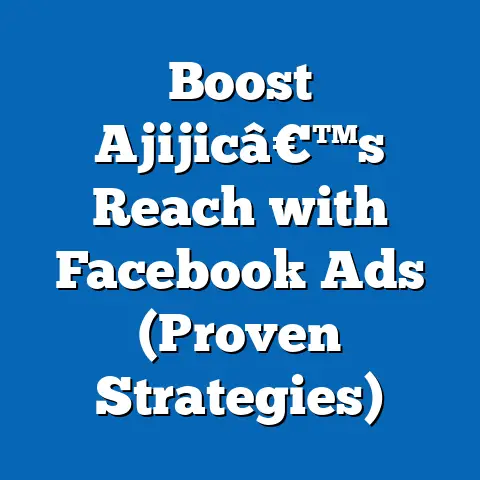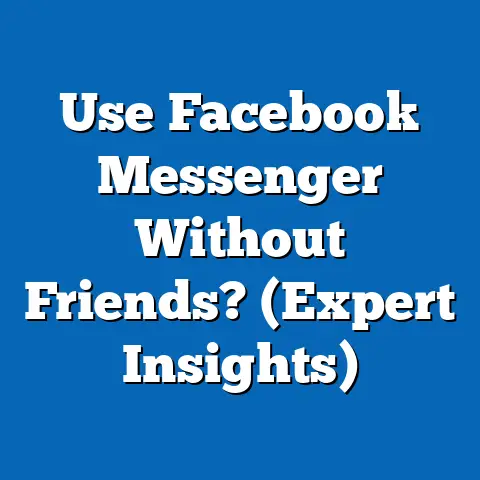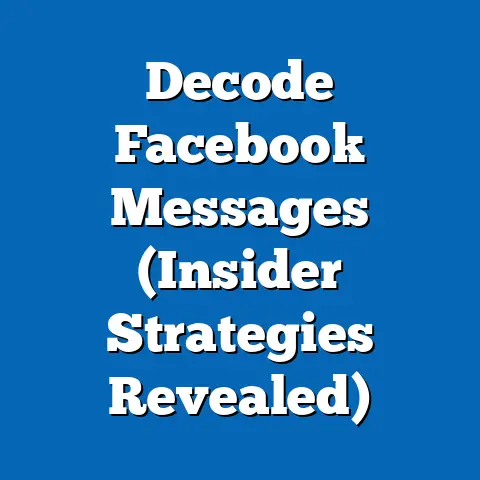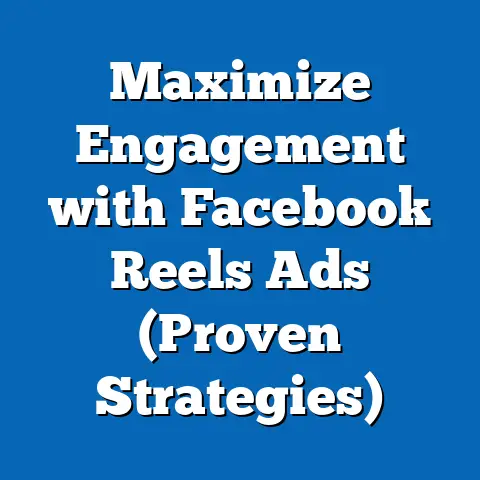Unlocking the Most Successful Facebook Ads Ever (Proven Strategies)
Did you know that Facebook advertising reached over $114.9 billion in global ad revenue in 2021, making it one of the largest digital advertising platforms in the world (Statista, 2022)? With more than 2.9 billion monthly active users as of Q2 2023, Facebook offers unparalleled access to a diverse global audience (Facebook Investor Relations, 2023). This massive reach, combined with sophisticated targeting tools, has made it a go-to platform for businesses of all sizes looking to drive brand awareness, engagement, and conversions.
However, not all Facebook ads are created equal. While some campaigns achieve staggering returns on investment (ROI), others fail to resonate, wasting budgets and missing opportunities. This article dives deep into the strategies behind the most successful Facebook ads ever, backed by data, case studies, and proven methodologies. From targeting tactics to creative best practices, we’ll explore what works, why it works, and how you can replicate these successes.
The Scale of Facebook Advertising: Key Statistics and Trends
Facebook’s dominance in the digital advertising space is undeniable. According to eMarketer (2022), Facebook accounts for nearly 25% of total digital ad spending worldwide, second only to Google. Small and medium-sized businesses (SMBs) are particularly reliant on the platform, with over 200 million businesses using Facebook’s advertising tools monthly (Facebook Business, 2023).
Demographically, Facebook’s user base spans a wide range. As of 2023, 31% of users are aged 25-34, making it the largest age group, while 18-24-year-olds and 35-44-year-olds each represent around 23% of the user base (Pew Research Center, 2023). Gender distribution is nearly even, with 56% male and 44% female users globally. Geographically, India leads with over 340 million users, followed by the United States with 180 million (Statista, 2023). These demographics highlight the platform’s versatility for targeting specific audiences.
Historically, Facebook ad spending has grown exponentially. In 2017, global ad revenue was $39.9 billion, a figure that nearly tripled by 2021 (Statista, 2022). This growth reflects increasing trust in the platform’s ability to deliver results, especially as mobile usage surged—94% of Facebook ad revenue now comes from mobile devices (Facebook Investor Relations, 2023). The trend suggests that mobile-first strategies are no longer optional but essential for success.
Why Some Facebook Ads Succeed While Others Fail
Creating a successful Facebook ad is both an art and a science. According to a study by WordStream (2022), the average click-through rate (CTR) for Facebook ads across industries is 0.9%, but top-performing campaigns can achieve CTRs as high as 3-5%. The difference often lies in a combination of targeting precision, creative design, and strategic bidding.
One key factor is audience relevance. Facebook’s algorithm prioritizes ads that resonate with users, as measured by engagement metrics like likes, comments, and shares. A 2021 analysis by Hootsuite found that ads with high relevance scores (above 8 out of 10) cost 30% less per click on average compared to low-scoring ads. This underscores the importance of aligning ad content with audience interests.
Budget allocation also plays a role. Data from AdEspresso (2022) shows that campaigns with daily budgets under $5 often struggle to gain traction due to limited reach, while budgets of $10-$50 per day see optimal performance for SMBs. However, throwing money at a poorly designed campaign won’t guarantee success—strategy matters just as much as spend.
Proven Strategies Behind the Most Successful Facebook Ads
To unlock the secrets of the most successful Facebook ads, we’ll break down key strategies into actionable sections. Each strategy is supported by data, real-world examples, and insights from industry reports. Let’s dive in.
1. Hyper-Targeted Audience Segmentation
Facebook’s greatest strength is its ability to target specific audiences with laser precision. The platform offers over 1,000 targeting options, including demographics, interests, behaviors, and custom audiences (Facebook Ads Manager, 2023). Successful campaigns leverage these tools to reach the right people at the right time.
A case study from Airbnb illustrates this perfectly. In 2016, Airbnb used Facebook’s lookalike audiences to target users similar to their existing customers, resulting in a 47% increase in bookings and a 14% lower cost per acquisition (CPA) compared to other channels (Facebook Business Case Study, 2016). Lookalike audiences, which use data from your customer lists or website visitors, consistently outperform broad targeting, with AdEspresso (2022) reporting a 20-30% higher conversion rate for such campaigns.
Demographic targeting also matters. For instance, a 2022 report by Sprout Social found that ads targeting women aged 25-34 had a 15% higher engagement rate for beauty products compared to broader audiences. The lesson? Narrow your focus—test small, specific segments before scaling up.
Data Visualization Description: Imagine a bar chart comparing CTRs across different targeting methods. On the left, broad targeting shows a CTR of 0.5%, while lookalike audiences reach 1.2%, and custom audiences peak at 1.8%. This visual would highlight the effectiveness of precise targeting.
2. Compelling Visuals and Copywriting
Visual content is king on Facebook. According to a 2021 study by HubSpot, ads with images generate 2.3 times more engagement than text-only ads, while video ads can boost CTRs by up to 48%. The most successful campaigns use high-quality visuals that stop users mid-scroll.
Take the example of Dollar Shave Club. Their 2012 viral video ad, shared on Facebook, used humor and a low-budget aesthetic to garner millions of views and a reported 12,000 new subscribers in just 48 hours (Forbes, 2012). The ad’s success wasn’t just in its humor but in its clear value proposition—affordable razors delivered to your door.
Copywriting is equally critical. Short, punchy headlines (under 40 characters) and clear calls-to-action (CTAs) like “Shop Now” or “Learn More” increase conversion rates by 28%, per WordStream (2022). Testing multiple ad variations is key—top brands often run A/B tests on 5-10 creative versions before identifying a winner.
3. Leveraging Video and Interactive Formats
Video ads have become a dominant force on Facebook. A 2023 report by Social Media Today found that video content accounts for 15% of all ad impressions on the platform, with an average engagement rate 37% higher than static images. Formats like Stories and Reels are particularly effective for younger demographics, with 18-24-year-olds spending 60% of their time on these features (Facebook Insights, 2023).
One standout example is Nike’s “Dream Crazy” campaign featuring Colin Kaepernick. Launched in 2018, the video ad garnered over 30 million views on Facebook alone and drove a 31% increase in online sales within weeks (AdWeek, 2018). The campaign’s emotional storytelling resonated deeply, proving that authenticity can outweigh controversy.
Interactive formats like polls, quizzes, and carousel ads also boost engagement. A 2022 study by AdEspresso found that carousel ads, which showcase multiple products in a single ad, achieve 10-15% higher CTRs compared to single-image ads. These formats encourage users to swipe, click, and interact, increasing time spent with the ad.
4. Optimizing for Mobile-First Experiences
With 94% of Facebook ad revenue coming from mobile devices, optimizing for smaller screens is non-negotiable (Facebook Investor Relations, 2023). Successful campaigns prioritize fast-loading creatives and mobile-friendly landing pages. According to Google (2021), a one-second delay in mobile page load time can reduce conversions by up to 20%.
A notable success story is Spotify’s mobile-first ad campaign in 2019. By using vertical video ads tailored for Stories, Spotify achieved a 24% higher completion rate and a 9% lower CPA compared to desktop-focused campaigns (Facebook Business Case Study, 2019). Simple tactics like ensuring text is legible on small screens and using bold visuals can make a significant difference.
Data Visualization Description: Picture a pie chart showing the distribution of Facebook ad revenue by device. Mobile dominates with 94%, while desktop accounts for just 6%. This visual would emphasize the importance of mobile optimization.
5. Retargeting and the Power of the Sales Funnel
Retargeting—showing ads to users who’ve already interacted with your brand—is one of the most effective strategies on Facebook. A 2022 report by Criteo found that retargeted ads have a 76% higher conversion rate compared to ads targeting new users. They’re also cost-effective, with CPAs often 25-30% lower (AdEspresso, 2022).
An iconic example is Amazon’s retargeting strategy. By displaying ads for products users viewed or added to their carts, Amazon reportedly achieves a 35% higher conversion rate on retargeted campaigns (Marketing Land, 2019). This approach capitalizes on existing interest, guiding users down the sales funnel.
Successful retargeting requires timing and relevance. Ads shown within 24-48 hours of a user’s interaction are 50% more likely to convert, per WordStream (2022). Additionally, segmenting audiences by funnel stage—awareness, consideration, conversion—ensures messaging aligns with user intent.
6. Data-Driven Budgeting and Bidding
Budgeting and bidding strategies can make or break a campaign. Facebook’s algorithm favors ads with consistent performance, so gradual budget increases (10-20% daily) are more effective than sudden spikes, per AdEspresso (2022). Campaigns using automatic bidding also see a 15% lower CPA on average compared to manual bidding (Facebook Ads Manager Insights, 2023).
A real-world example is Coca-Cola’s 2017 “Share a Coke” campaign. By starting with a modest budget and scaling based on early performance data, Coca-Cola achieved over 1 billion impressions and a 7% sales lift (Campaign US, 2017). Their success highlights the value of data-driven adjustments over guesswork.
Testing is crucial. Allocate 10-20% of your budget to experimental campaigns, as recommended by Hootsuite (2022). This allows you to identify high-performing ads before committing larger sums.
Historical Trends vs. Current Data: How Facebook Ads Have Evolved
Looking back, Facebook ads in the early 2010s were simpler, often relying on basic images and broad targeting. A 2012 report by Socialbakers noted an average CTR of 0.05%, a far cry from today’s 0.9% (WordStream, 2022). The introduction of video ads in 2014 and Stories in 2017 shifted the landscape, prioritizing dynamic content over static posts.
Demographic engagement has also changed. While older users (45+) were a smaller segment a decade ago, they now represent 18% of the user base and are the fastest-growing group (Pew Research Center, 2023). This shift has led brands to tailor campaigns for mature audiences, often focusing on trust-building and detailed storytelling.
Current trends point to personalization and automation. Machine learning tools like Facebook’s Advantage+ campaigns, launched in 2022, optimize ad delivery in real-time, achieving up to 20% better results for advertisers (Facebook Business Blog, 2023). The future likely holds even tighter integration of AI, with predictive analytics shaping ad strategies.
Demographic Differences and Patterns in Ad Success
Demographic data reveals stark differences in ad performance. For instance, ads targeting Gen Z (18-24) perform best with short, trendy videos on Stories and Reels, with a 40% higher engagement rate compared to static ads (Sprout Social, 2022). Millennials (25-34), on the other hand, respond well to value-driven offers, showing a 25% higher conversion rate for discount-focused campaigns.
Gender also influences outcomes. Women are 15% more likely to engage with lifestyle and wellness ads, while men show a 10% higher CTR for tech and gaming content (Hootsuite, 2022). Geographic trends are equally telling—urban users in the U.S. have a 12% higher CTR than rural users, likely due to faster internet access and higher purchasing power (Statista, 2023).
Understanding these patterns allows advertisers to craft hyper-relevant campaigns. Testing ads across demographic segments ensures budgets aren’t wasted on unresponsive audiences.
Case Studies of the Most Successful Facebook Ads Ever
Case Study 1: Old Spice – “The Man Your Man Could Smell Like” (2010)
Old Spice’s 2010 campaign redefined viral advertising. The humorous video ad, shared extensively on Facebook, reached over 40 million views within weeks and drove a 107% increase in sales (AdAge, 2010). Its success stemmed from memorable creative, consistent branding, and rapid response videos addressing user comments.
Case Study 2: BuzzFeed Tasty – Recipe Videos (2015-Present)
BuzzFeed’s Tasty brand pioneered short, visually appealing recipe videos on Facebook. By 2017, their videos had amassed over 100 billion views, with ads driving a 20% higher engagement rate than industry averages (BuzzFeed Media, 2017). Their mobile-first, shareable content remains a benchmark for video advertising.
Case Study 3: Glossier – Community-Driven Ads (2016-Present)
Beauty brand Glossier used user-generated content (UGC) in their Facebook ads, showcasing real customers instead of models. This approach led to a 30% higher conversion rate and a community of over 2 million followers (Vogue Business, 2019). Authenticity and relatability were key to their success.
Broader Implications and Future Trends
The strategies behind successful Facebook ads—precise targeting, compelling visuals, mobile optimization, and data-driven decisions—offer lessons beyond the platform. They reflect a broader shift toward personalized, user-centric marketing in the digital age. As privacy regulations like GDPR and Apple’s App Tracking Transparency (ATT) reshape data collection, advertisers must prioritize transparency and first-party data, with 68% of marketers already adapting to these changes (eMarketer, 2023).
Looking ahead, the rise of AI and augmented reality (AR) will likely transform Facebook advertising. AR ads, which allow users to “try on” products virtually, have shown a 94% higher conversion rate in early tests (Facebook Business Blog, 2022). Meanwhile, short-form video content, driven by platforms like TikTok, will continue to influence Facebook’s ad formats, with Reels already accounting for 20% of ad impressions among younger users (Social Media Today, 2023).
Ultimately, success on Facebook requires adaptability. By staying data-driven, testing relentlessly, and prioritizing user experience, businesses can unlock the full potential of this powerful platform. The most successful ads aren’t just about selling—they’re about connecting, inspiring, and delivering value in a crowded digital landscape.

